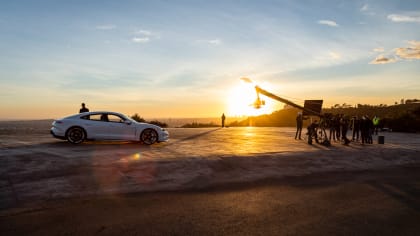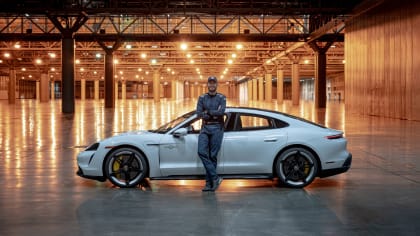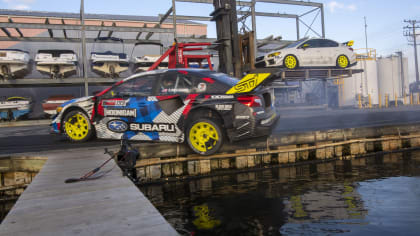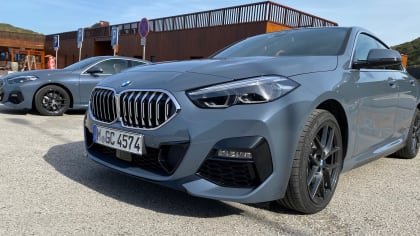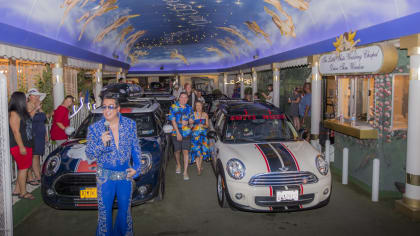Us vs Them
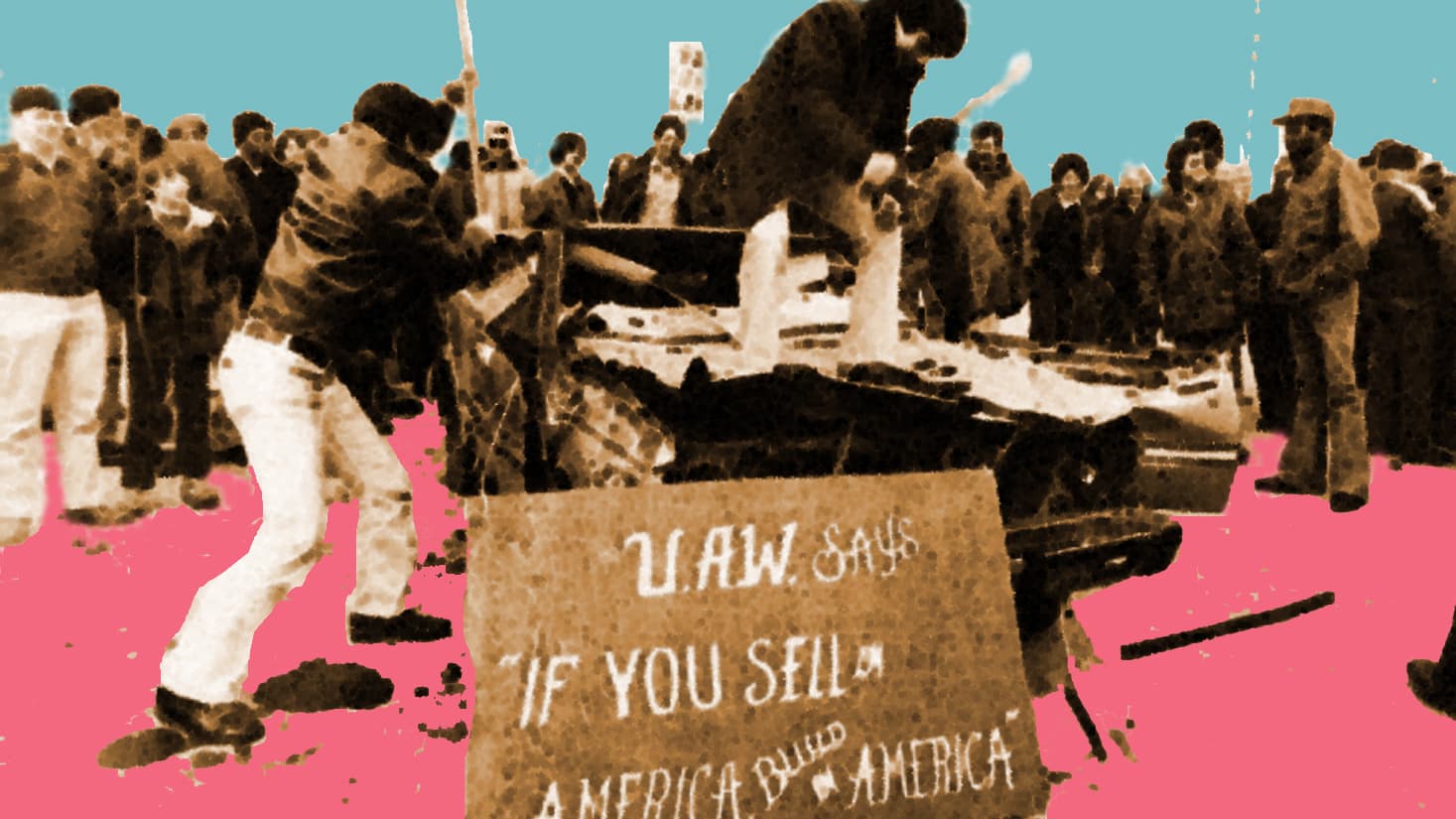
An op-ed deep dive
Ford vs Chevy. Import tuners vs American hot rods. Gas vs electric. Coal rollers vs tree huggers. Tesla vs the world. And one of the most tragic outcomes of automotive rivalries: Two autoworkers versus a groom-to-be - 40 years this June.
By Roy Nakano
Sun, Jun 5, 2022 07:55 PM PST
Featured image is a palette knife rendering from AP’s March 3, 1981 photograph of UAW Local 588 members with the Ford Motor Company taking sledgehammers to a Toyota Corolla.
Automotive rivalries have been with us since Henry Ford took his 26-horsepower racecar and beat Alexander Winton in 1901.
During the second half of the twentieth century, the cross-town rivalries of Ford versus Chevrolet versus Mopar and its many iterations, from the oval tracks of NASCAR to the stoplight drag races on the local boulevards were legend. Even the car magazines got into the act, with the perennial Ford Mustang versus Chevy Camaro shootouts that continue on to this day.
It’s all in good rivalry - mostly. You know, competition improves the breed. But sometimes, it gets out of hand - even deadly (more on this later). With the advent of social media, it’s entered some new pathways. Most recently, the spotlight has been on the electric car trailblazer, Tesla.
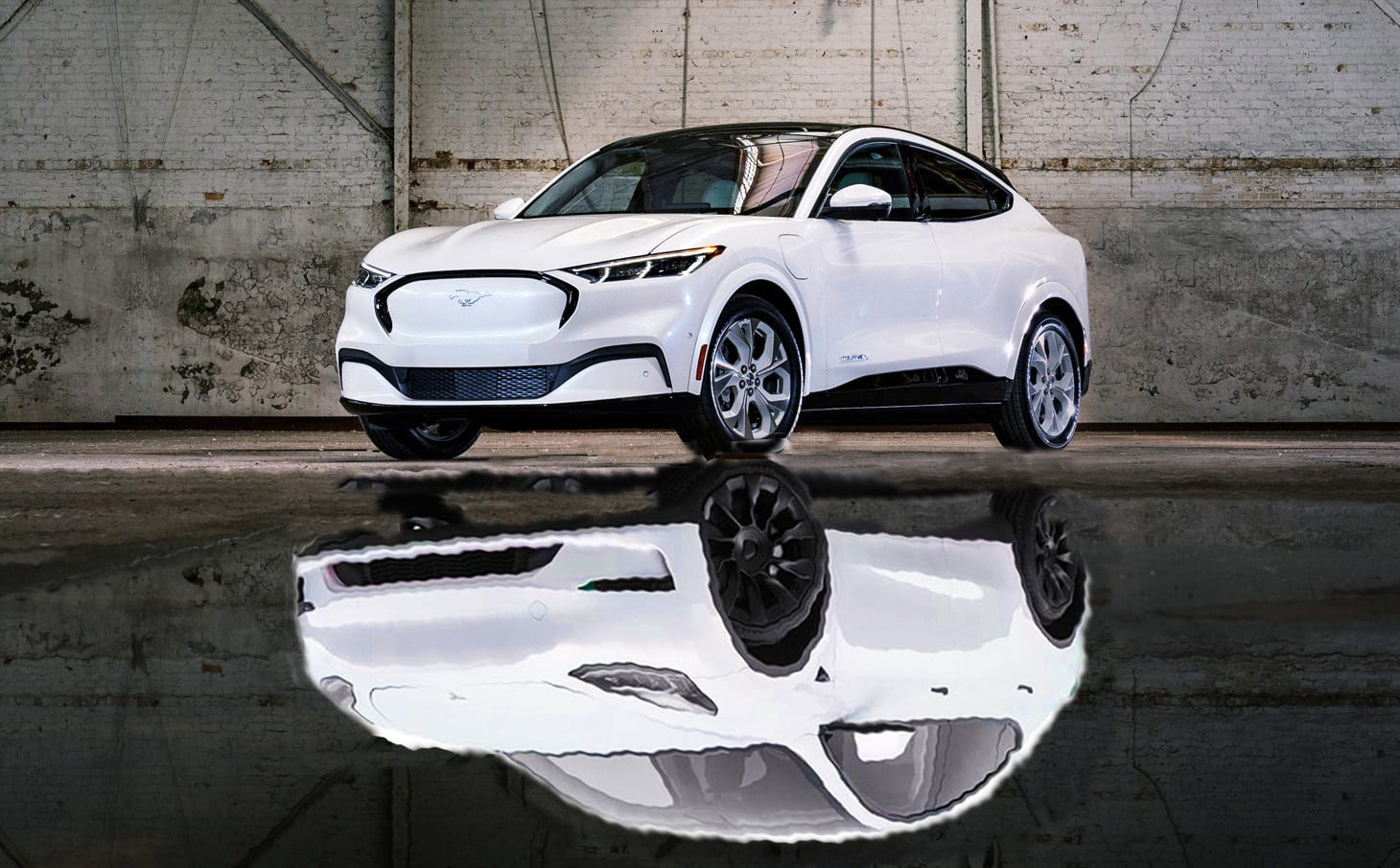
Tesla versus the World
When Tesla Model X owner Sergio Rodriguez shared his excitement at acquiring a Ford Mustang Mach-E electric car to his fellow Tesla Worldwide Owners Facebook members, he incurred the wrath of die-hard Tesla fans for, among other things, letting Big Oil buy him out. "Before I knew it, about 65% of the comments were just bashing me," reports the Detroit Free Press.
"One was, like, 'I hope the car loses control and crashes.' Or 'The car is going to catch fire when you're driving it,'" said Rodriguez according to the Free Press. He took that as a threat. “Then someone privately messaged me, 'You're full of s*** and I know what your Tesla looks like. If I see it …' That private message on Facebook was more threatening," remarked Rodriquez.
They are derisively referred to as “Tesla fan boys” - a small but vocal segment of Tesla owners and supporters that won’t hesitate to vociferously defend the marque, its models and its CEO, Elon Musk. Criticism, no matter how constructive or well intentioned, can unleash a torrent of attacks. Most Tesla owners don’t fall into this pattern, and are happy just to see other companies taking electric cars seriously. So when the vocal minority makes a stand, there’s eye-rolling from all sides. But the Tesla die-hards are not without reasons for their heavy-handed approach.
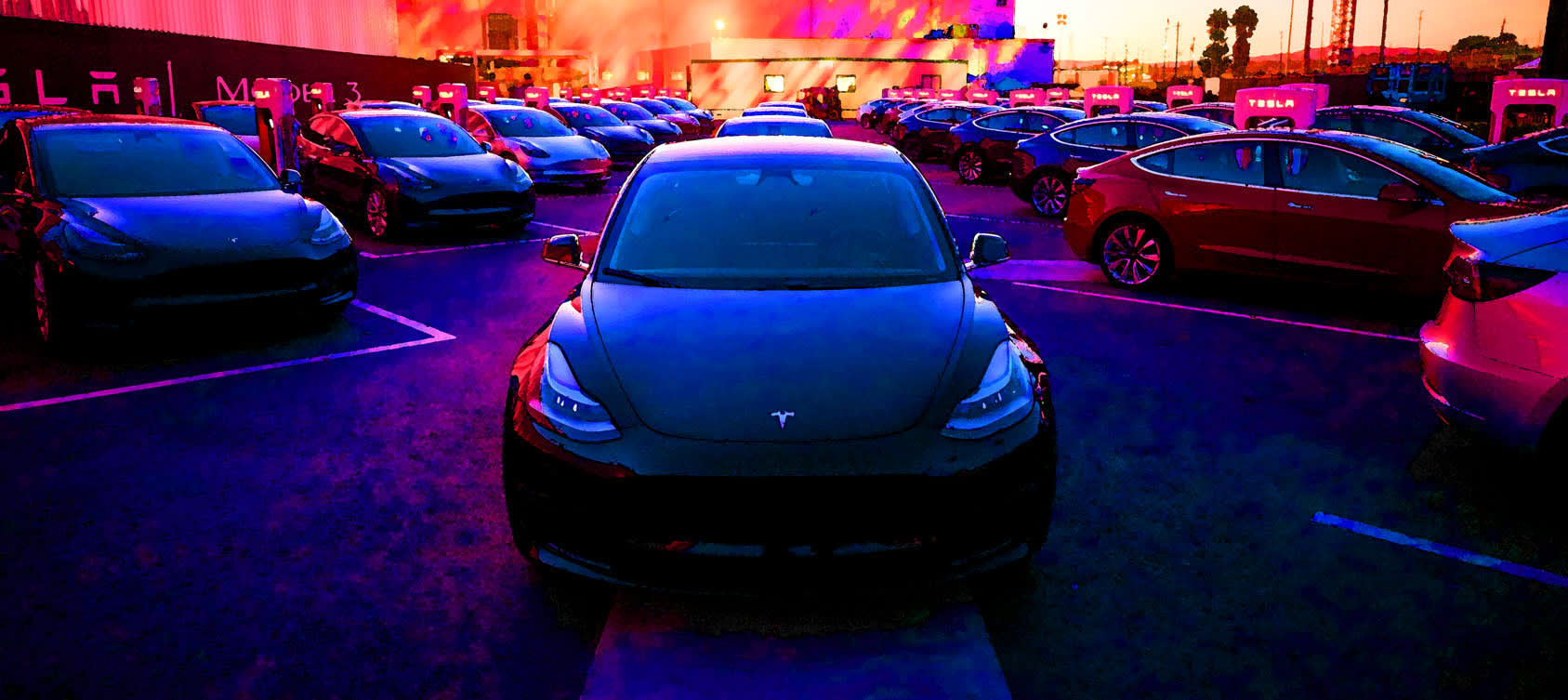
The World versus Tesla
There’s a lot of love for Tesla, but there’s also a lot of hate. Early Prius owners are familiar with this contradiction. It’s the “new kid in town” syndrome. As the story goes, when the new kid arrives with an unfamiliar approach to things, there’s the usual curiosity and excitement. There’s also fear and loathing that brews. Marvel’s Hulk character carries this prejudice famously (“Whatever Hulk doesn’t understand, Hulk destroys!”). It’s been a similar pattern with automobiles.
20 years ago, Prius’ hybrid technology generated more than its share of fear and trepidation. Rumors spread about the car, including replacement batteries costing $10,000 and mineral excavation sites ruined and abandoned as a result of the manufacture of hybrid batteries. The rumors were later debunked, but it didn’t help matters that some Prius owners took their superiority complex too far. It got so bad, the animated TV show South Park lampooning them in its episode “Smug Alert”.
Fast forward to 2018. Tesla launched its Model 3 a year earlier, and CEO Elon Musk says the company is going through “production hell”, as it tries to meet the popular demand of the new car. Meanwhile, investor short sellers are rooting for the company’s demise. The perceived smugness of some Tesla owners creates a backlash similar to what happened with the Prius a generation earlier. Teslas become a frequent target of car keying - the act of using a key to scratch the paint along the side of a car. Then in February of 2019, Tesla introduces Sentry Mode, an over-the-air addition that turned the multiple Autopilot cameras on the car into a security system. Several people keying Teslas were turned over to the police authorities as they were caught in the act, and the practice - at least against Teslas - diminishes.

Rolling Coal
Rolling coal has its origins with sled pulling competitions. In order to get the most performance leverage out of their diesel trucks, competitors strip the emissions controls, resulting in billowing black smoke out of the exhaust pipes.
For a small segment of diesel truck owners annoyed with outspoken environmentalists, blowing some smoke in front of green cars or bicycles seemed like a harmless way to have some fun with the unique capabilities of these diesel trucks - until it wasn’t. The rolls got longer. The animosity grew. The targets widened to include anyone that represented “them”, including civil rights protesters, Asian cars, and even police.
Aside from the momentary blindness of the smoke, there are other hazards associated with coal rolling. In September of 2021, a 16-year old in Waller, Texas floored the gas pedal of a Ford Super Duty truck to spew black smoke on a group of bicyclists, but ended up running over six of the cyclists.
The Houston Chronicle reports that Waller County District Attorney Elton Mathis wrote in a Facebook post: “They are causing their vehicle to ‘spit’ on a living, breathing, human being that is worthy of dignity and not having his or her person violated. That simple assault is easily elevated to a jail eligible offense if bodily injury occurs, which can be caused by entry of toxic particles into mouth, nose and eyes.” Charges were filed in November.
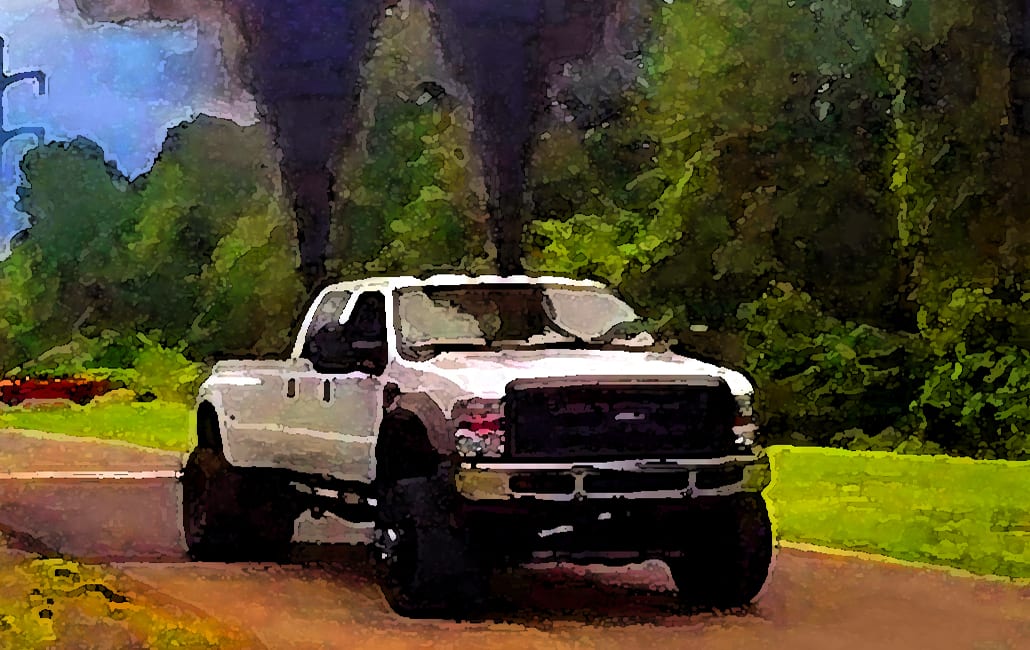
Detroit Cars, the UAW and Asian Hate
While the pandemic has awakened an undercurrent of anti-Asian hate, one of the more tragic incidents of anti-Asian American violence occurred 40 years ago - and involved a laid-off autoworker, his step-father, and a Chinese American groom-to-be.
The backdrop was the U.S. auto industry, which was reeling from stiff foreign competition. The late 1970s and early 1980s was a low point for the reputation of Detroit car companies. Consumer publications railed against their products for unreliability, poor quality, and poor gas mileage, compared to the prominent products coming out of Asia at the time. Today, those same consumer publications show the Detroit car companies rallying back, but the reputations from that era still linger.
Meanwhile, United Auto Workers members and others in Detroit took their frustrations out against foreign-based car companies, but especially against Japanese cars. A few took to sledgehammering ceremonies, with a Toyota vehicle as the recipient of the hammer.
The Vincent Chin Case
On June 19, 1982, a groom-to-be Vincent Chin was celebrating his bachelor party with friends at an adult club when an altercation took place with a Chrysler plant supervisor and his stepson, a laid-off autoworker. Witnesses at trial testified that the plant supervisor told Chin, “It's because of you little motherf****rs that we're out of work." Evidently, the assailants were unable to appreciate the difference between Chinese and Japanese, let alone an overseas automobile company and an American of Asian decent.
The altercation escalated outside the club, with the plant supervisor retrieving a baseball bat from his stepson’s car. The two cornered Chin at a nearby fast food restaurant. The stepson held Chin while the plant supervisor proceeded to bludgeon him until Chin’s head cracked open.
Officers arrived and ordered the assailant to drop his bat. By then, however, it was too late. Chin was rushed to Henry Ford Hospital. He never regained consciousness, and was pronounced dead on June 23, 1982. As it turned out, the death of Vincent Chin was only the beginning of this tragedy.
The assailants were subsequently charged with second-degree murder. Wayne County Circuit Court Judge Charles Kaufman convicted them of manslaughter after a plea agreement.
As for the sentence, they were given three years probation, ordered to pay $3,000 in fines and $780 in court fees. Neither served any jail time. American Citizens for Justice, a group formed in response to the leniency of the Chin case, protested the leniency of the sentences. Judge Kaufman responded, “These weren’t the kind of men you send to jail… You don’t make the punishment fit the crime; you make the punishment fit the criminal.”
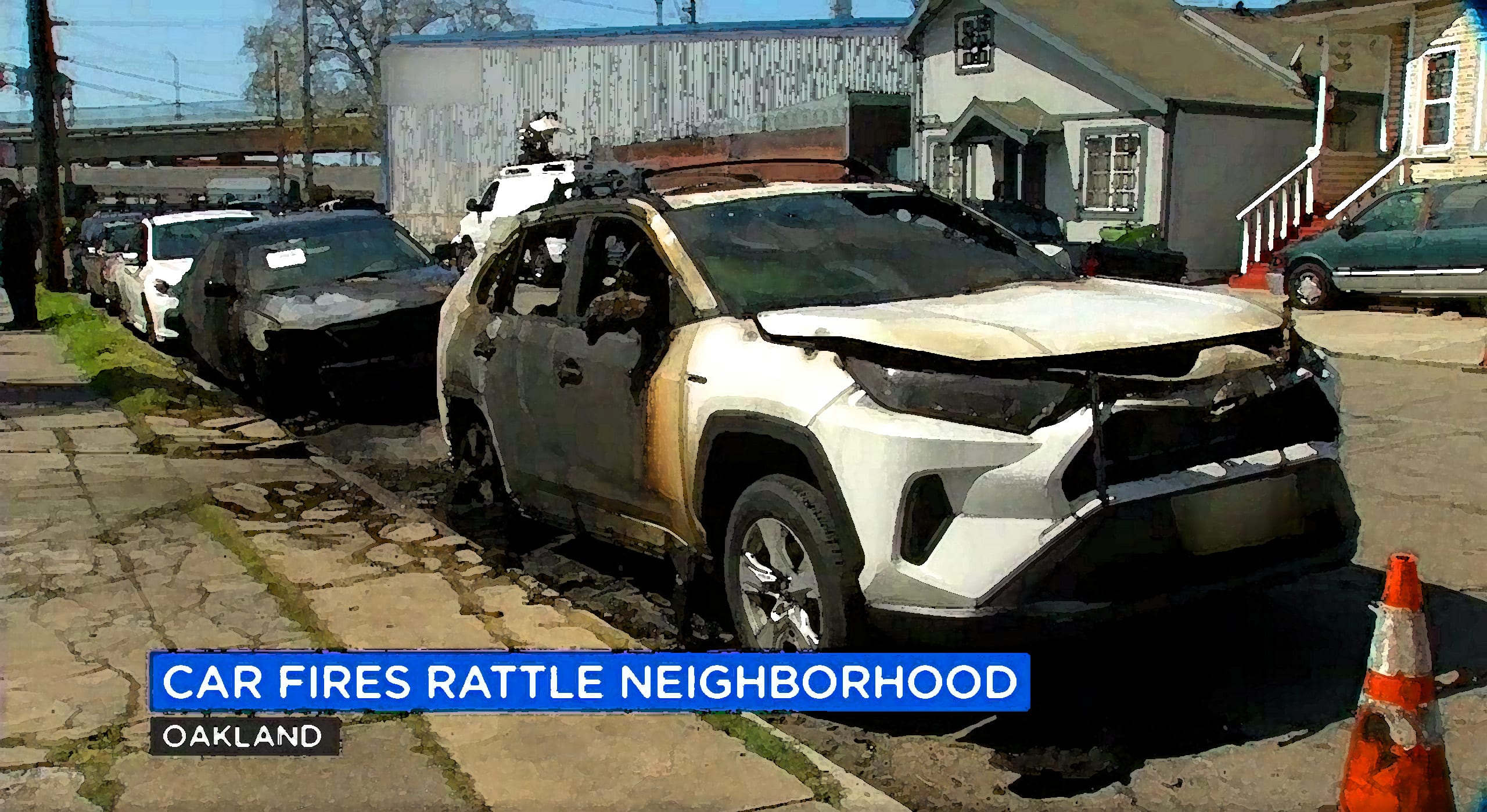
The Others
The “us versus them” pattern goes by another name: Othering. It’s the word for what happens when we treat people from another group as different from and inferior to the group you belong to. Othering is most often associated with racial or ethnic divisions. However, it can also apply to political views or even views about the cars you buy and drive.
Recently, social media has been taken to task for amplifying these divisions. "Social media is full of this information to address your agenda,” admitted Jim Sells to CNN Senior Producer Nadia Kounang. For a story about the influence of social media, Sells informed Kounang that he relied heavily on social media for his news information and it was the source of a lot of his viewpoints. “The algorithm sends just what you want to hear right to you, and I was filled with this information."
Social media giant Facebook has been under the spotlight for its role in allowing misinformation to spread. Despite public declarations that the company has prioritized resources to tackle misinformation on their platform, internal Facebook documents provided to Congress say otherwise.
Haters Gonna Hate?
All this adds up to an unprecedented level of animosity amongst groups of people. While the term “haters” is as old as Old English, only in the last few decades has the term been elevated to describe a class of people - more specifically, an undesirable segment of “other people”.
“The act of hating people you don’t exactly agree with has become so ingrained, so routine for so many people, I think if they stopped, they’d miss it, said Bill Maher of HBO’s “Real Time with Bill Maher” (Season 19, Episode 31). “It’s become so normalized now, we don’t even notice how often someone online is wishing someone dead. Anyone we disagree with. It’s evil incarnate. And every argument goes from zero to homicide.”
A Light at the End of the Tunnel?
Tesla owner Sergio Rodriguez’s death threats by other Tesla owners for buying a Mustang Mach-E received a lot of coverage in the Detroit Free Press. Not as well publicized were the throngs of Tesla owners that came to Rodriguez’s defense. And while Tesla fan sites on Facebook will periodically feature a post deriding a competitor’s electric car offering, someone will always chime in with, “Good to see others getting into the electric car world.”
The intense rivalries between Ford, Chevrolet, and Mopar fans of yesteryear have mellowed over time. The people that once drag raced these cars on the city streets are now in their twilight years. Today, many gather at classic car shows and admire each other’s machinery. Their one-time animosity has given way to a sense of mutual respect at the shows.
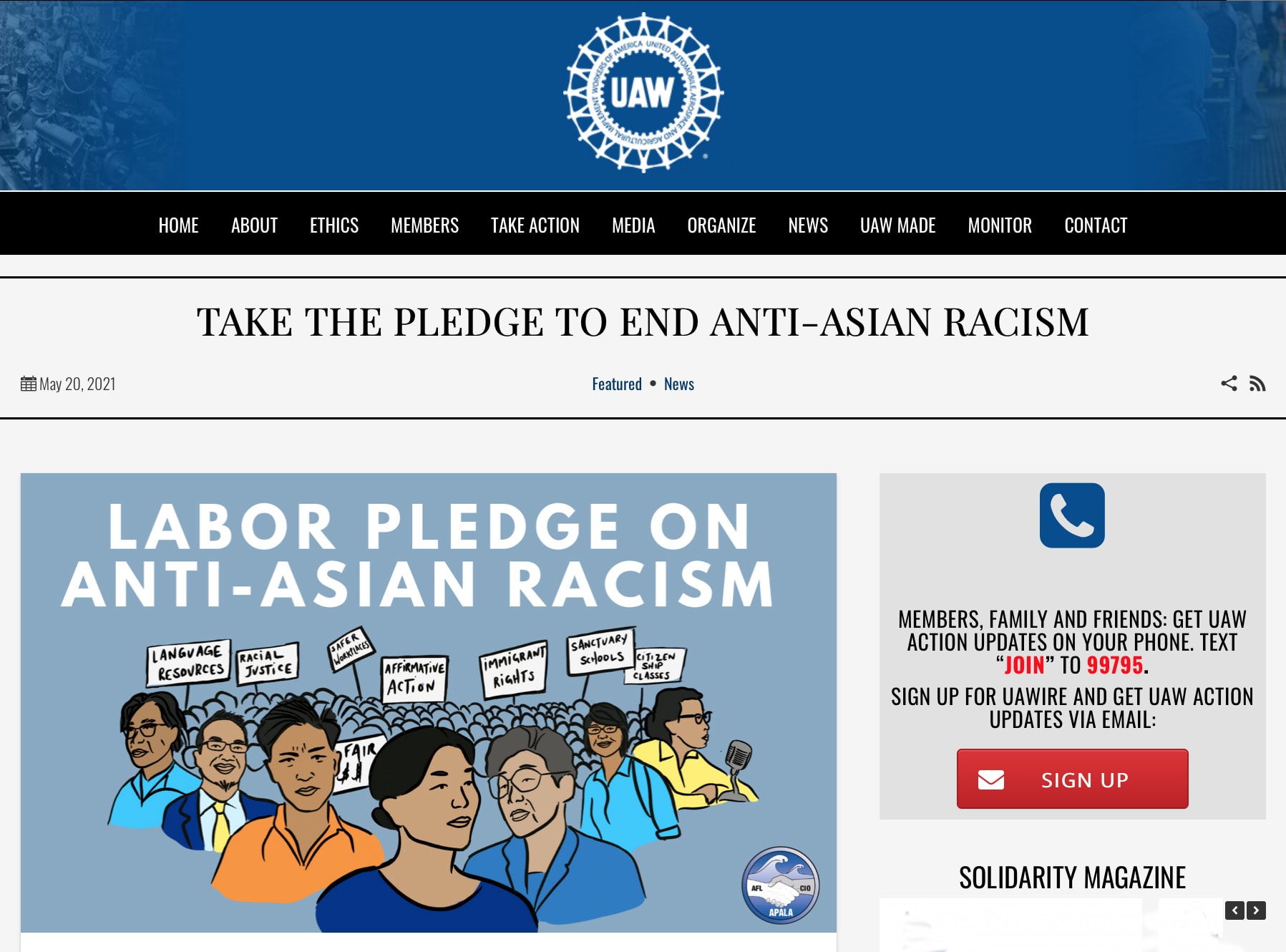
In the meantime, Asian hate rages on. But there are signs resistance to it is growing. Even the United Auto Workers took the initiative to combat anti-Asian American sentiment among its ranks:
“[L]ast year has seen a startling rise in hateful rhetoric and violence against members of these communities. This hate affects not only those directly involved, but strikes fear and sadness in hearts across the nation and it has no place in our country or in our union. That’s why we’re asking members to take the Asian Pacific American Labor Alliance’s pledge to end anti-Asian racism. The pledge calls on unions to invest in AAPI worker organizing and leadership development and calls on union members to address racism when they see it in their workplaces and union halls. Together we can combat xenophobia and lift the voices of our Asian American and Pacific Islander union brothers and sisters.”
– UAW, “Take the Pledge to End Anti-Asian Racism”, May 20, 2021
The late Madeleine Albright wrote about “us versus them” thinking last year, but gave reasons for believing why she was hopeful for the future. “However we conceive of ‘us’, we have ample grounds for humility,” she said. “I can speak only for myself, but I have been wrong many times. My attitudes and opinions are always changing as I learn more and perhaps forget a few things here and there. There is no question that we all have a right to quarrel with one another; that’s the democratic way. But we also have a responsibility to talk frankly and to listen carefully, to recognize our own faults, and to refrain from pinning dehumanizing labels on those with whom we disagree.” – Madeleine Albright, “'Us vs. Them' Thinking Is Tearing America Apart. But Here's Why I'm Still Hopeful About the Future”, January 15, 2021, Time magazine.
Maher offered up his solution to the “us versus them” escalation in his usual, blunt fashion: “[Let’s] take it down a notch. Can we start with that? Is that really so hard?” …It’s up to all of us, right, left, center, to fix this by de-escalating. So here’s everybody’s first assignment. …You want to heal America? Shut the f… up for once.”
Albright put it more eloquently: “Going forward, let us advocate vigorously on behalf of causes that concern us as individuals or groups; but let us also never forget that we belong in addition to a larger circle. No matter how we define ‘us’; no matter how we define ‘them’; ‘We the People’ is an inclusive phrase.”
About The Author

Roy Nakano gave birth to LACar in the late '90s, having previously delivered LA Audio File back in the '80s. Aside from the occasional review, Roy likes to stray off the beaten automotive path: "Six Degrees of Reparations" reflected on the regretful ethical paths taken by car companies throughout history. "Traveling Through the Past and Present of the Green Book" looked at businesses that took a stand against racism and the man that wrote the book on where to find them. "Best Cars to Drive in Rush Hour Traffic" was an LACar guide published in the pre-GPS era. "In Search of the First Datsun 510 Tuner" looked at one of the milestones in the origin of import tuners. And "Us vs Them" examines the instances when rivalry among automotive enthusiasts crossed the line to violence and even death.
